

SaaS Product Management and Product-Led Growth: How To in 2022? 🚀
source link: https://usersnap.com/blog/saas-product-management/
Go to the source link to view the article. You can view the picture content, updated content and better typesetting reading experience. If the link is broken, please click the button below to view the snapshot at that time.

SaaS Product Management: The Central Nervous System to Product-Led Growth (PLG)
Every SaaS company, whether B2B or not, looks to get more intimately connected with their customers’ needs and pains to grow. Which one wouldn’t? In order to understand customer needs, get more customer feedback, and use it actionably, the rise and importance of SaaS product management within digital companies are “mooning” 🚀. What do I mean by this?
SaaS product management is undoubtedly the engine that helps digital enterprises grow. According to one study, a great product manager can be responsible for up to a ~34% increase in profits. And in the age of Product-Led Growth (PLG), a term coined by now-pioneer Wes Bush, product management and customer-led product development are the lynchpin to SaaS business success.
At Usersnap, we have a particularly strong connection with SaaS product managers. Saas PMs are a key customer group, and consistently offer us very valuable insights to improve our product. We dug deep into their work throughout several research projects; when talking about SaaS PMs, we like to think that we have some idea of what you’re up to 😉. Although if you read this and disagree, you can always correct me.
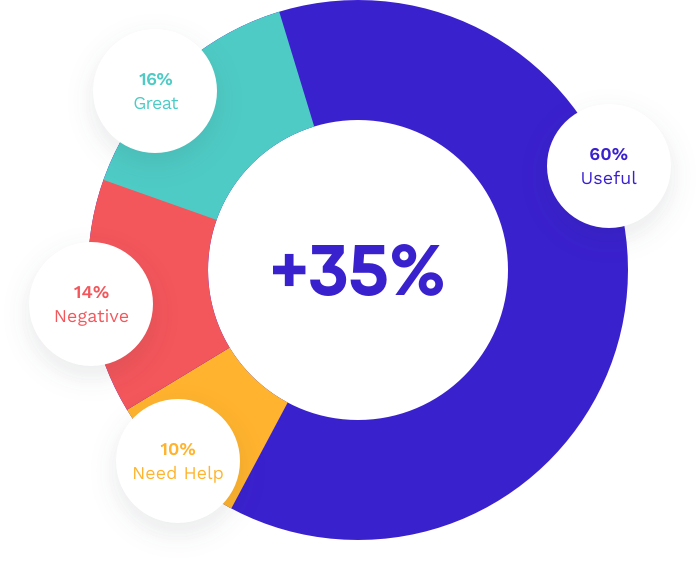
In this article, we’ll define SaaS product management, PLG, and how the two connect. Additionally, we’ll go into the traits of SaaS product managers who build great products. Finally, we’ll leave you with some best practices while on the job for SaaS product managers in 2022.
What is SaaS Product Management?
SaaS product management is the integral process and execution of bringing a company’s digital product line to market (e.g. “Go-To-Market”), from start to finish. The product life cycle requires research, strategy, internal company alignment, product development, and consistent product refinement. All of these require SaaS product management and a SaaS product manager to be in the middle of.
Research
SaaS product managers do research from start to finish within the product development life cycle. How? From the beginning, SaaS product managers will hypothesize about problem spaces, which they either know something about or not. From there, they will try to develop ways to better understand those problem spaces. Some examples include customer satisfaction surveys, net promoter score questions, and user interviews (shown below).

When there’s an unkonown problem space, they conduct generative (discovery) research on the topic to try and better understand the problem. Alternatively, when the problem space is well-known, this is called evaluative research. Why? Sometimes, a PM has already received feedback on this topic (from teammates, customers, or tertiary research sources)
In short, generative research will unlock the unknowns for the product team, and create the foundation for product initiatives. On the other hand, if the problem space is already quite well-defined, a SaaS product manager will dig deeper into the problem space, where they will conduct evaluative research.
Strategy
SaaS product management requires extensive strategy in order to execute on hypotheses or defined product initiatives. What does this mean? Product managers need to know where the company wants to head, what type of hurdles (competition, resources, etc.) are blocking success, and how to best chart the course in a cost-effective way. Sometimes you as a PM will also be a product owner, and when that’s the case, you’ll need to rely on team feedback to make sure that your approach isn’t’ short-sighted.
“Identify a very big market, if your market is small nobody will want to invest and not even you, you will feel like you’re wasting your time” – SC Moatti
Part of this requires having a solid product vision. What does this mean? Offering a clear idea of what the purpose of your product is, and the positive change it brings about for customers. Keeping this product vision in the back of your mind while iterating on product strategy keeps you closer to being on the right track.
Internal Company Alignment
Another integral requirement to defining SaaS product management is getting everyone on the same page. Whether it is the technical feasibility of a particular feature or marketing promotions, it can be difficult to make it clear to all colleagues why one approach, product, feature, or initiative is better than another. Without this clarity, colleagues will be hesitant to go 110% for the activity in question. And even if they give 110%, without clarity there is the possibility of wasted time, resources, and effort doing the wrong things. This is why SaaS product management requires consistent, clear communication with internal stakeholders to get them to act.

An example of this would be marketing and product management collaboration. If the marketing team doesn’t understand what the latest feature actually does, who it serves, how it functions, and how important it is, the promotional communications can get sideways really quickly. Unfortunately, this can happen all too often, which is why internal company alignment at the start of a project is a must.
Product Development
Once research, strategy, and internal company alignment are in place, then the core of SaaS product management takes place: product development. What does this mean in practice?
- Prototyping what the proposed solution should look like (with the design team), and getting initial feedback from customers.
- Specifying to the software engineering and design team what needs to be done in order to release the next iteration on time.
- Maintaining time discipline to meet the required deadlines.
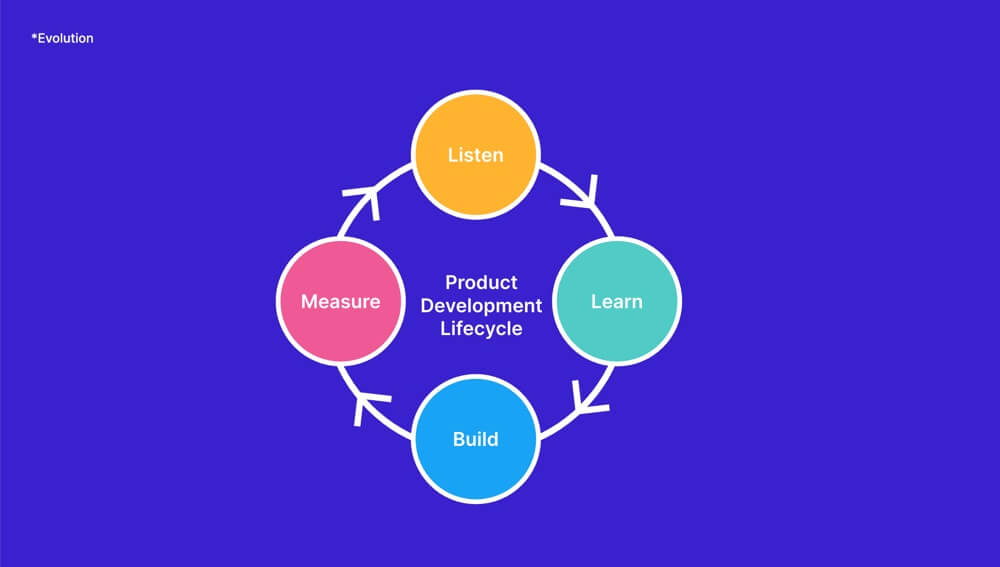
Product development becomes the nuts and bolts of SaaS product management, and product managers need to keep focus during this phase so that the right proposed solution comes to life.
Product Refinement (Through Customer Feedback)
Last but not least, once the SaaS product management team releases the latest iteration, then it is time to get feedback from users. The feedback could come in the form of
- Bugs and issues
- General feedback
- Satisfaction on that part of the product, or
- Requests and suggestions.
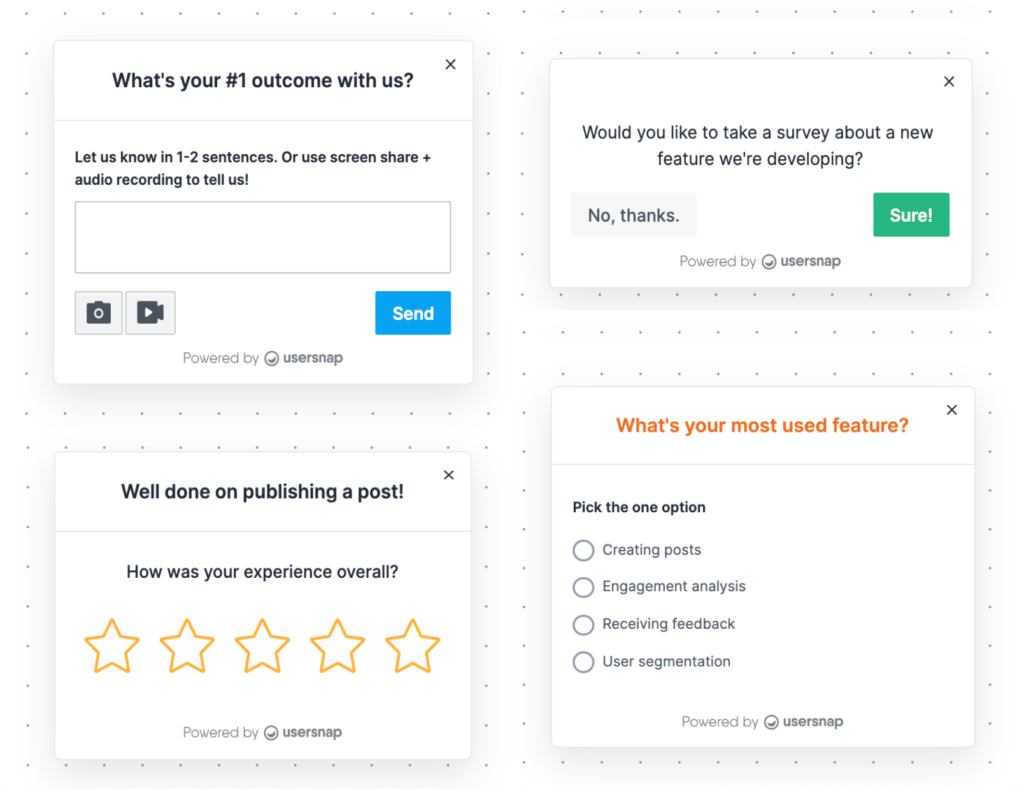
With that information, the product managers in the team need to go through this feedback with a “fine-tooth comb”. One-by-one, they place each piece of feedback in the right bucket to its eventual resolution.
For example, if there is a bug or consistently low rating on a part of the product, a SaaS product manager needs to identify the severity of it, and determine the time frame to act on it. Maybe the bug or consistently low rating is a “hair on fire” situation that needs to be put out immediately. Perhaps the issue identified isn’t stressful enough, and only the ends of the SaaS product management team’s hair can be scorched without any problems.

Additionally, if there is a suggestion for how to improve the product, this might go into a backlog and future discussion on what to build or iterate on in the next quarter.
Finally, SaaS product management means getting back to the customers, and letting them know that their concerns are serious. When a bug or feature request addressed, SaaS product managers should tell their customers that it was handled. Without this follow-up communication
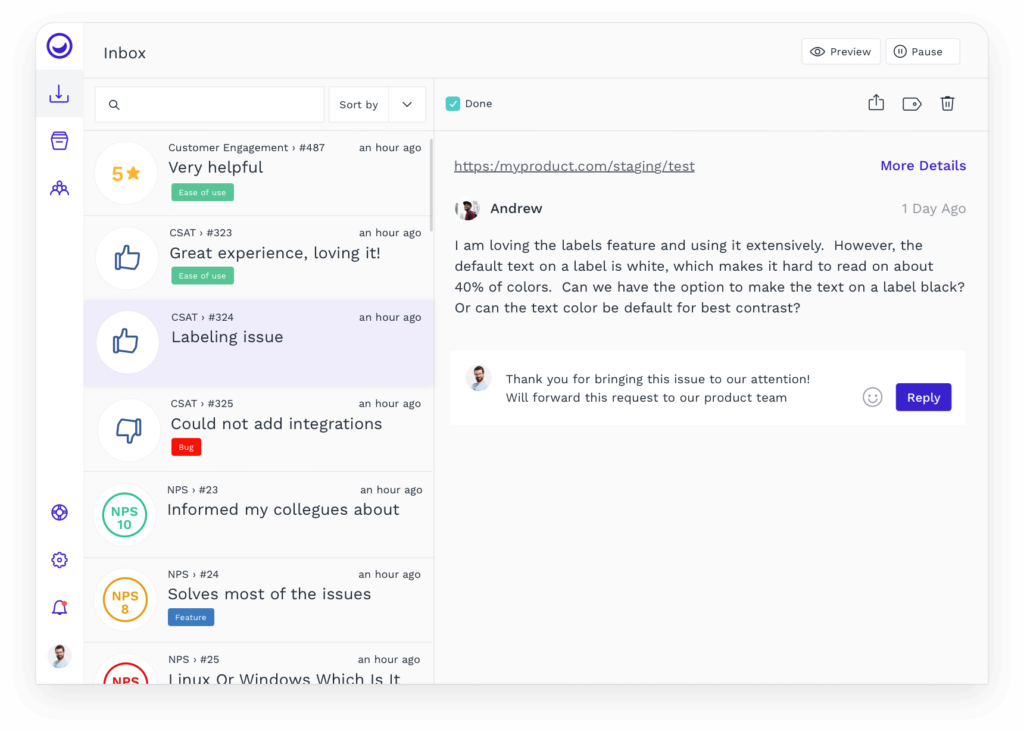
What is Product-Led Growth (PLG)?
As recently as February 2022, Wes Bush (the inventor of the “Product-Led Growth” term) defined PLG as “a go-to-market strategy that relies on using your product as the main vehicle to acquire, activate, and retain customers.” It has skyrocketed in the last few years for two reasons.
On one hand, the sales-driven approach is quite saturated for digital consumers. Simply put: people have had enough of marketing, surface-level content, promotion, sales, and ads. Studies show the effectiveness of advertisements are grossly overestimated (by up to 4,100%) by the people crafting them. On the other hand, these approaches are proven to work less and less over time. Studies show that less than 1% of leads that come to a business via gated content actually convert into customers.
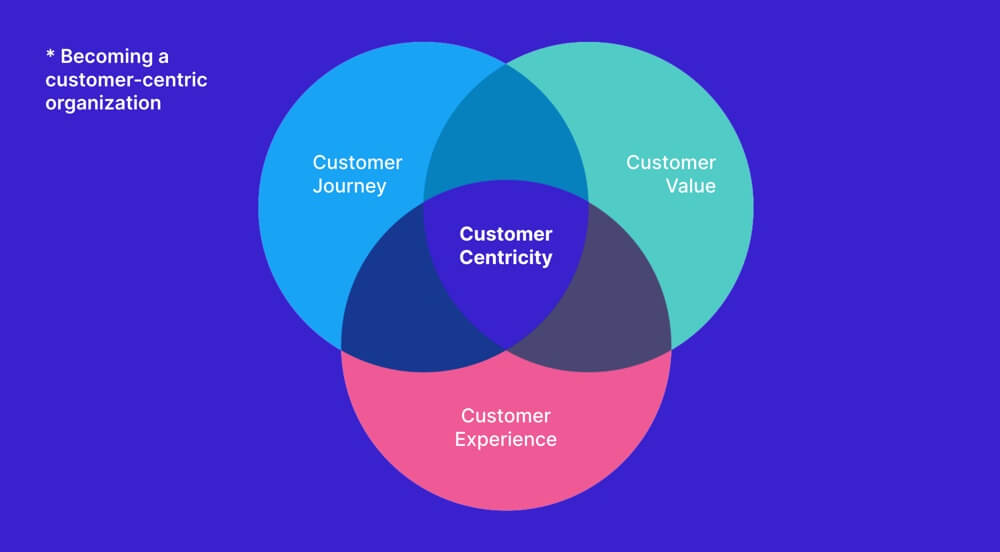
Product-Led Growth focuses on a customer-centric approach to onboarding new users in a simple way, while constantly providing value throughout one’s user journey until the obvious point of conversion. Once the user has had hands-on experiences with your product, they become a Product-Qualified Lead (PQL). When that same user realizes they can no longer do their job without your tool, the likelihood they convert increases. Once they’ve converted due to the product-led experience they received, you continue to educate customers on the consistent value provided.
For these reasons, PLG has gained quite a bit of traction in the product management space and SaaS industry at-large. Its framework gives sense to the often chaotic approaches and environments SaaS product management teams must face.
How is SaaS Product Management the Central Nervous System to Product-Led Growth?
Simply put: good SaaS product management is the vehicle that drives PLG. The success of SaaS product managers and product teams requires a shift toward the PLG mindset. Product strategies are partially informed by data, and PLG places a strong emphasis on understanding user data in order to make product decisions. No SaaS product manager wants to be shooting arrows in the dark. As SaaS product management embraces the PLG mindset, PMs get closer to driving more and more customer-centric product initiatives. And because of this, the sooner PLG becomes the norm in every digital organization.
Additionally, PMs can leverage the PLG mindset to change the approaches of colleagues outside of the SaaS product management team. What do I mean by this? When other teams also recognize the need for the PLG approach, they’ll view their products with customers in mind. This shift in mindset and approach gets teams to see product quality and ability to deliver on a persona’s job-to-be-done (JTBD).
8 Traits of Effective, PLG-Minded SaaS Product Managers
SaaS product managers who want to double down on PLG in their organization should always keep a few things in mind. These traits can be developed with an acute awareness of them, and a keen desire to improve on them as well. Finally, SaaS product management also requires many of these traits generally, with or without a PLG lens.
1. Detailed Understanding of Products
A SaaS product manager who can easily identify any product’s purpose, USP, and target persona is immediately in better shape to apply PLG principles within a team and organization. This intelligent identification of a product’s characteristics is equally applicable and more important to the SaaS product manager’s own product. By doing so, a PM can also identify the same product characteristics of competitors, distinguish how the competition fails to meet customer needs, and double down on the USPs of the PM’s actual product.
2. Knowledge of Customer Needs
Generally, SaaS product management strategy requires understanding customer needs. On top of this, in order to start applying PLG ideas, approaches and frameworks within your team and organization, you’ll need to identify your customer’s needs. A good way to do that is to talk with them, ask them questions, solicit feedback, and take it seriously!
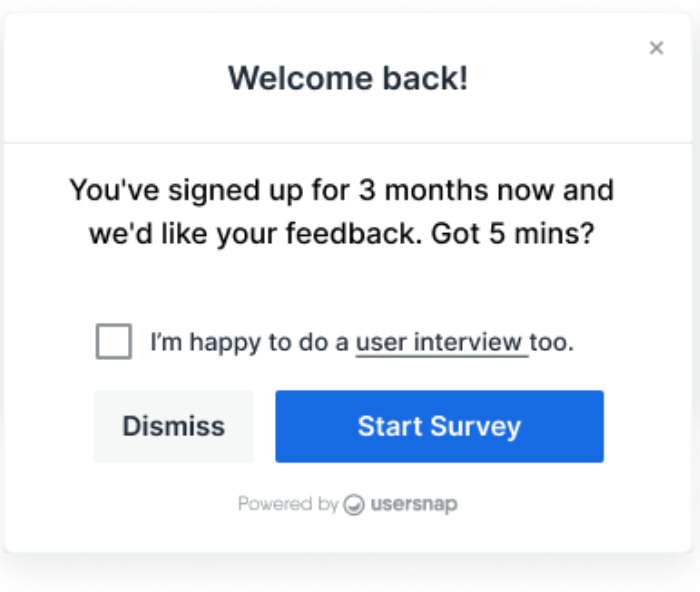
Also, in SaaS product management, it is always important to take learnings from previous experiences (sometimes in other organizations) and apply them to your current organization. An example of this would be a process that you know works (or doesn’t work) based on past experience, and to integrate those learnings into your current context. By doing so, you’ll share your wisdom as a good SaaS product manager.
3. A Detailed Understanding of Responsibilities
A SaaS product manager must be able to read between the lines of the job offer and description. Certainly, the responsibilities will reference some of the core tenants of SaaS product management (as we described above). Past that, however, there are process-related responsibilities that a SaaS product manager should address after assessing the current operational landscape.
For example, if the product team is not doing foundational research on problem spaces before going into product development, but you believe this is core to SaaS product management, something has to be done. In practice, this means a SaaS product manager might take the lead on building in a research process, to eventually hand it off when time and resources are available to do so. In short: if there are clear gaps in the product development process, SaaS PMs serve the team and themselves best by identifying bottlenecks and relieving them with team-based solutions.
4. Anticipating Problems and Challenges
So the feature is built, and we pop the champagne? Well, not quite yet. A SaaS product manager should anticipate problems and challenges before they arrive in their inbox.
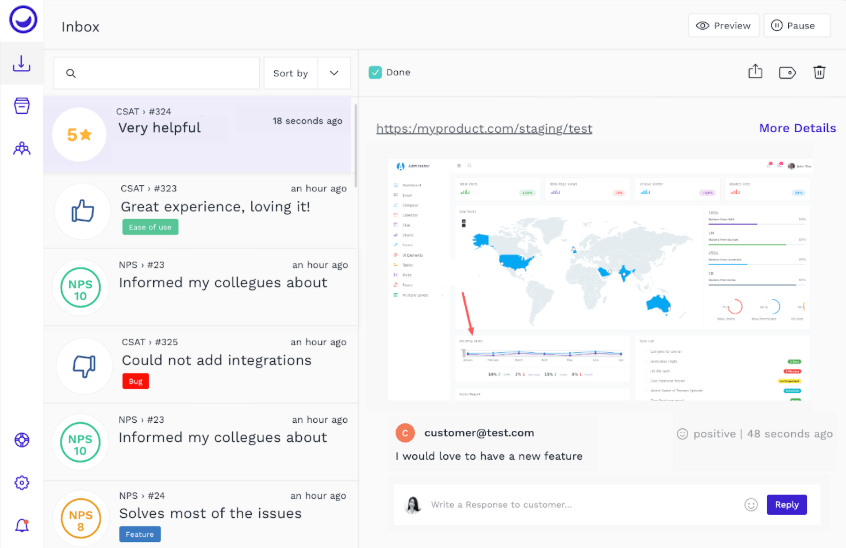
Even if checkers is fun, SaaS product managers need to be playing chess. After the next release, what contingencies can you imagine playing out because of the release? Additionally, what plans can you start to enact immediately once a hypothesized challenge lands on your to-do list?
Lastly, what methods of tracking your success or progress did you set up from the start of the project? Without these measurements already in place, it can get quite messy when it comes to identifying actual issues, bottlenecks, and problems that impact a customer’s ability to get a job done.
When it comes to anticipating problems and challenges, having a clear action plan before the project starts, as well as clear KPIs to know when there is a problem, is crucial.
5. Excellent Decision-Making Ability
SaaS product management and PMs require strong abilities to make the right decisions. It can be really hard to adjust to all the inputs coming in at once, much less filter oneself from self-inflicting cognitive biases. How can you as a SaaS product manager consistently get good inputs, and always know you’re going in the right direction? Achieving this is difficult, and takes time and experience to recognize.
Once a project is complete, SaaS PMs should do a retrospective to match the eventual success (or failure) of the project with the process that took place that led to the result. With that information, a SaaS PM can get great insights into the decision-making process and how to build one that works time after time.
6. Dynamic Leadership Qualities
SaaS product management which can integrate the PLG approach necessitates product leadership. Product leaders, by nature or by nurture, start acting more and more like the CEO of their product. They not only develop some of the traits mentioned here and after, but they take responsibility for the team’s growth on these traits and skills as well. Product leadership means not just fishing for a friend, but teaching a friend to fish so they can do it for themselves.
In short: Dynamic product leadership = taking responsibility for the growth of the product and those who work on it.
7. Stakeholder Management
SaaS product management means getting stakeholders on board. This means providing the best evidence possible for why one decision should be made versus another.
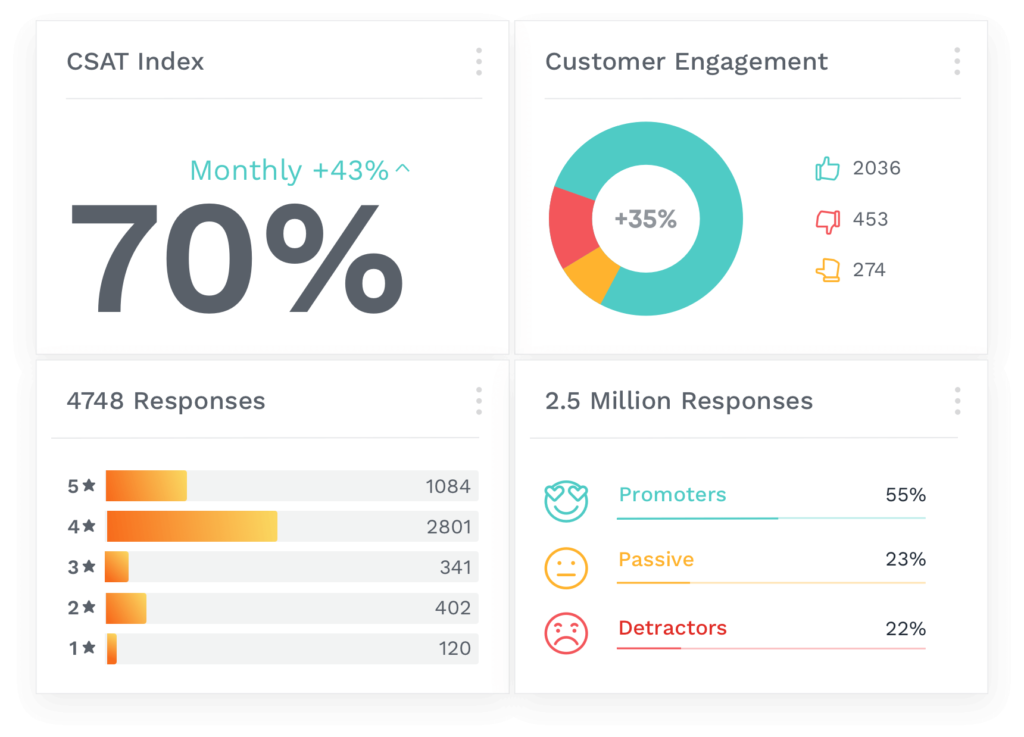
Once you’ve got the business and customer facts on your side, and your stakeholders are on-board, then what? From there, it is about consistent communication with them. They probably don’t want to know everything about the status of a project or its granular KPIs that made it successful or not. However, they do want to know what is going on at the meta-level, what it means for them and their activities, and what is up on the horizon.
For example, if the marketing team doesn’t know enough about the newest feature that is being released, how can they promote it effectively? In some cases, stakeholder management means clear documentation, blocking time for internal Q&As, and making yourself available to discuss with stakeholders when their questions or concerns would come up.
8. Combining Hard and Soft Skills to Deliver Successful Iterations
Then after all of this, SaaS PMs need to be fact-based, but do it in a way that allows for human emotion. Without human emotion, either coming from the PM, members in the product team, or with other stakeholders, there’s no sense of connection or teamwork.
SaaS product management is tricky business at times, because of this consistent process of zooming out and zooming in, looking at facts that are qualitative as well as quantitative, and keeping everyone who works on the project satisfied in the process and outcome. Thus, taking all of these traits and blending them into personal interactions and processes is a key trait for a SaaS product manager.
Best Practice Checklists for SaaS Product Management in 2022
Now that you see how important PLG and SaaS product management are to each other, let’s walk through some tangible do’s and don’ts for 2022.
Do’sDon’tsKnow your productUnderestimate the power of communicationBe organizedForget product re-evaluationMake engineer’s lives easyAllow feature creepListen to customersAssumption is the motherload of screwupsOwn your Product & your mistakesEscalate things that can be resolved within your immediate teamPay attention to detailsBlame others for mistakes: own-up
Also, here is a quick checklist you can always refer to when it comes to SaaS product management.
SaaS Product Management ActivityDone and Validated?Minimum Viable Product (MVP)✅Defined USP✅Realistic Timeline Creation✅Feedback Collection and Innovation✅Product Testing✅Pricing Setting✅KPIs Formulation✅Team Coordination✅Competitor Attention✅Conduct Target Market Research✅Product Launching Strategies✅Fully Functional Products✅Product Demo Creation✅Sales Deck Preparation✅
Recommend
About Joyk
Aggregate valuable and interesting links.
Joyk means Joy of geeK